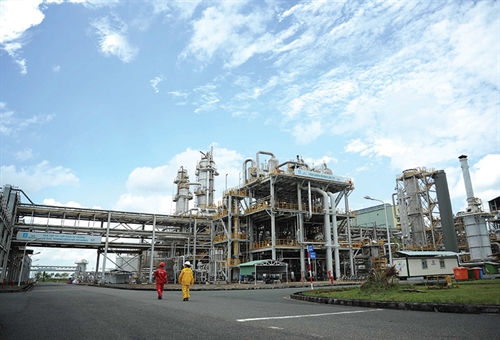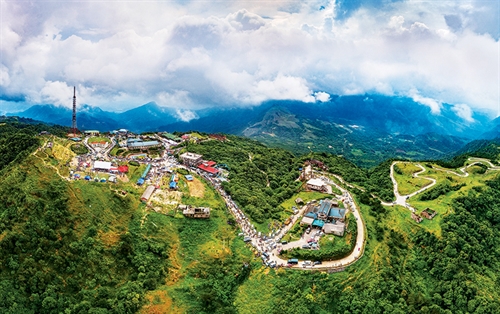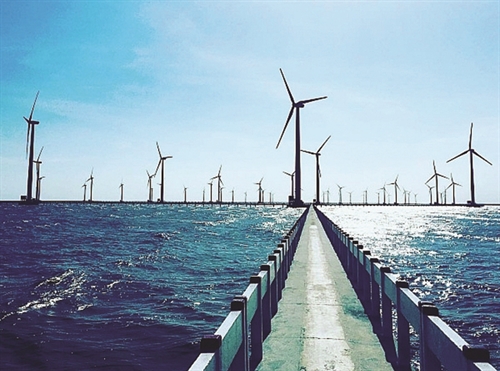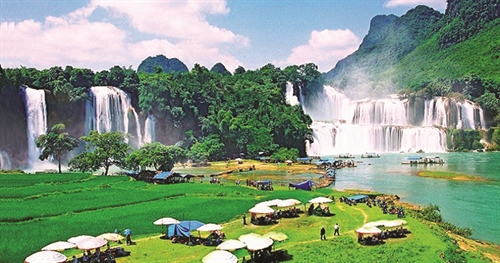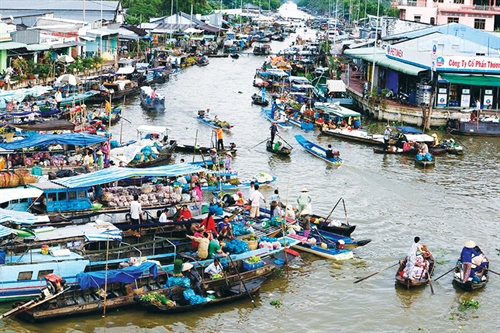Encompassing an area of some 2,100 square kilometers, Ho Chi Minh City (HCMC) (known as Saigon until the 1975 national reunification) borders Binh Duong province to the north, Tay Ninh province to the northwest, Dong Nai province to the east, Ba Ria-Vung Tau province to the southeast and Long An and Tien Giang provinces to the west and southwest. HCMC has a typical monsoon climate with two distinctive seasons: rainy season from May to November and dry season from December to April. With almost 9 million people (according to the 2019 statistics), the city is the most populous locality in the country. It has 19 urban districts (districts 1 thru 12, and Tan Binh, Binh Thanh, Phu Nhuan, Thu Duc, Go Vap, Binh Tan and Tan Phu) and five suburban districts (Nha Be, Can Gio, Hoc Mon, Cu Chi and Binh Chanh).
Lying downstream of Dong Nai and Sai Gon rivers, HCMC is surrounded and traversed by almost 1,000 kilometers of rivers and canals which offer a great potential for waterway tourism. The city plays a key role in connecting the Mekong River delta with central and northern regions via highway 1A, and HCMC-Long Thanh-Dau Giay and HCMC-Trung Luong expressways. It is connected with Dong Nai province via Highway 52, Ba Ria-Vung Tau province via Highway 51, Binh Duong province via Highway 13, Tay Ninh province and Cambodia via Highway 22 and Central Highland provinces via Highway 14.
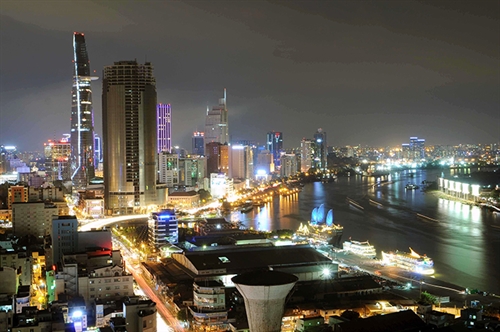 |
| High-rise buildings, the symbol of the breakthrough development of Saigon-Ho Chi Minh City 45 years after the national reunification__Photo: An Hieu/VNA |
Saigon was originally founded with first residential settlement areas in 1623. However, its birth was officially proclaimed in 1698 when army commander Nguyen Huu Canh is credited by Lord Nguyen Phuc Chu for expanding the country’s territory to the south. Nha Rong harbor of Sai Gon is the place where President Ho Chi Minh (alias Nguyen Tat Thanh) set sail on a quest to seek ways to save the nation in 1911. After the national reunification, the 6th National Assembly renamed Sai Gon after President Ho Chi Minh on July 2, 1976.
The city has drastically changed with modern architectural structures along the Saigon river banks. Its transport infrastructure system has been upgraded and expanded with elegant avenues, modern expressways, bridges and tunnels such as Vo Van Kiet-Mai Chi Tho (or the East-West) highway and the cable-stayed Phu My bridge. Worthy of note, the Thu Thiem road tunnel under Sai Gon river, which officially opened to traffic in November 2011, is one of the most modern transport works in Southeast Asia. The city has planned to expand Tan Son Nhat international airport by building one new terminal south of the current one which is designed to serve 20 million passengers per year.
To help ease its traffic congestion problem, HCMC is speeding up the construction of Metro Line No. 1 linking Ben Thanh Market in district 1 with Suoi Tien Theme Park in district 9 which is expected to be completed by the end of 2021 and Thu Thiem 2 bridge linking districts 1 and 2 which is expected to be completed by the end of this year. It is also striving to complete the An Suong tunnel in the An Suong intersection in district 12 this July among other construction projects.
The country’s biggest economic hub and FDI magnet
HCMC is to date home to 16 industrial parks and three export processing zones, occupying a total area of 4,530 ha, plus the Sai Gon Hi-Tech Park and the 43-ha Quang Trung Software City.
Vice Chairman Stephan Pudhill of Techtronic Industries that specializes in manufacturing outdoor power equipment from China’s Hong Kong has shared his company’s reason for choosing the Sai Gon Hi-Tech Park as its investment destination.
The Sai Gon Hi-Tech Park has a strategic location that is near the city center with top universities and conveniently connected with logistics facilities, he said, adding that it boasts abundant high-quality human resources, particularly R&D engineers and skilled workers, in addition to strong commitments of the city’s authorities to support the company’s project implementation.
According to the municipal General Statistics Office, HCMC granted investment licenses to 310 foreign direct investment (FDI) projects totaling USD 199.7 million and permitted 59 existing FDI projects to add USD 107.8 million to their registered capital amounts in the first four months of 2020. They include 340 wholly foreign invested projects worth USD 192.7 million and 29 joint ventures worth USD 6.9 million. These projects are engaged in trade, real estate, science and technology, information and communications, construction, processing and manufacturing industries, transportation and services. To date, 45 countries and territories have been investing in the city. Japan is the largest investor with 36 projects capitalized at USD 69.1 million, followed by Singapore with 57 projects and USD 41.9 million and Hong Kong (China) with 26 projects and USD 26.4 million. The other investors are from the Republic of Korea, Malaysia, mainland China and Taiwan. Although leading the country in terms of the number of FDI projects, the city ranked third after Bac Lieu and Ba Ria-Vung Tau provinces in terms of investment capital.
HCMC has so far had 9,516 operational FDI projects with a combined registered capital of USD 47.6 billion.
To attract FDI this year, Permanent Vice Chairman of the municipal People’s Committee Le Thanh Liem was quoted by the HCMC Party Committee’s website as saying that the city would increase its FDI attraction activities and support enterprises in improving their operation quality to boost foreign investment efficiency apart from assisting the city’s key sectors. In addition, the city would hold more direct dialogues between its authorities and enterprises, implement solutions to remove difficulties for enterprises and organize a series of investment promotion conferences, he added.
At present, new projects investing in science and technology and environmental protection, and manufacturing projects, excluding those manufacturing products subject to excise tax and mining ones, are entitled to corporate income tax exemption for four years and 50-percent corporate income tax reduction in subsequent nine years. Meanwhile, investment projects in the sectors eligible for investment incentives in industrial parks in the outskirts of the city are entitled to corporate income tax exemption for two years since the generation of taxable income and 50-percent corporate income tax reduction in subsequent four years.
Hospitality sector’s efforts to recover from COVID-19
HCMC is well-known for popular attractions such as Dam Sen and Suoi Tien parks, Saigon Central Post Office, French colonial architecture of Notre Dame Cathedral, Reunification Palace and Ben Thanh and Cho Lon markets. Among its 11 museums and more than 1,000 temples and pagodas, the War Remnants Museum, Ho Chi Minh Museum, Thien Hau Pagoda, one of the oldest pagodas belonging to the ethnic Cantonese-speaking Hoa group and the Jade Emperor Temple are must-see tourist destinations. Other famous tourist destinations include the mangrove forests of the UNESCO-listed Can Gio Biosphere Reserve, 40 kilometers from Ho Chi Minh City and the Cu Chi guerrilla warfare tunnels in Phu My Hung commune of Cu Chi district.
The city also boasts 19 traditional craft villages, including Xuan Thoi Son village that produces bamboo baskets in Hoc Mon district, Thai My village that makes bamboo baskets, chairs, tables and other furnitures in Cu Chi district, Le Minh Xuan village that makes incense in Binh Chanh district and Ly Son village that makes salt in Can Gio district.
Due to ongoing impacts of the COVID-19 pandemic, the city’s hospitality sector is suffering from drops in the number of international arrivals and revenues.
The municipal Department of Tourism reported that the city welcomed more than 1.18 million foreign holiday makers and earned a turnover of VND 21.1 trillion in the first two months of the year, down 21.7 percent and 10.7 percent year on year, respectively.
Travel agents saw year-on-year drops in the number of visitors and revenues of 60 percent in the first two months and even 100 percent in March.
After the COVID-19 pandemic is being successfully controlled in the country, both tourism businesses and relevant sectors have carried out plans for recovery and restructure the tourism market.
The hospitality sector’s recovery relied on the resilience of each tourism business, Deputy Director of the municipal Department of Tourism Vo Thi Ngoc Thuy has told the Radio Voice of Vietnam (VOV).
Therefore, the Department has proposed to superior agencies effective measures to assist tourism businesses such as giving tax breaks and extending deadlines for payment of social insurance premiums, issuing tourist vouchers, finalizing and enacting legal documents to assist tourism businesses hit by the COVID-19 pandemic, and promoting regional products made by the city as well as cities and provinces in the Mekong River delta and southeastern region, she said.
Thuy said the city has coordinated with Google in implementing a tourism stimulus program, part of the city’s media campaign, to introduce “Banh mi Saigon” (Saigon bread) in 11 nations. The city plans to launch the promotion program “Hello, Ho Chi Minh City” featuring images of safe, lively and hospitable HCMC at present, she added.
HCMC sets a target of receiving 10 million foreigners and raking in a tourism turnover of VND 165 trillion this year, a year-on-year increase of 15 percent and 11 percent, respectively.
Last year, the city welcomed 8.5 million foreign arrivals and earned a gross revenue of VND 150 trillion.-
